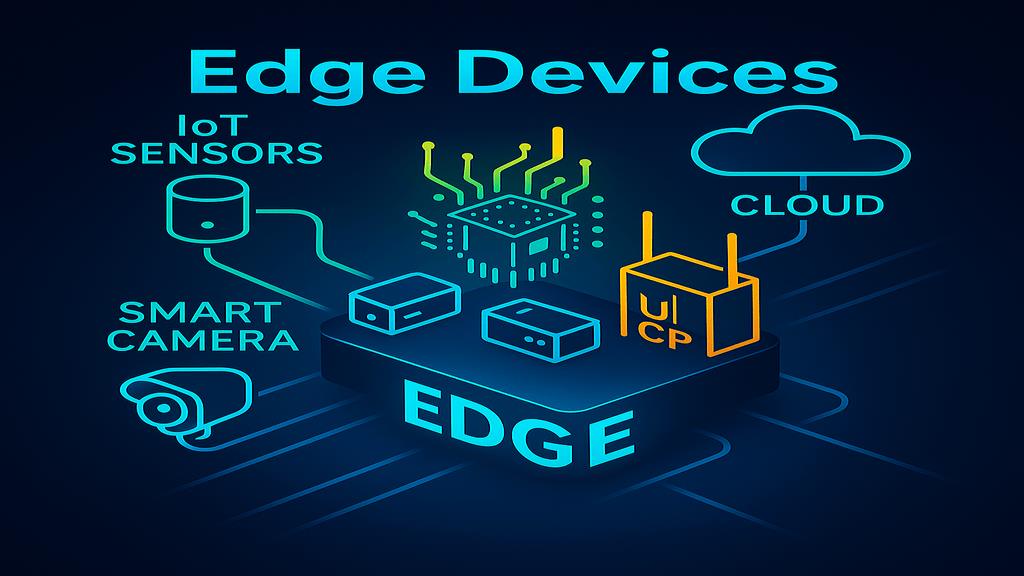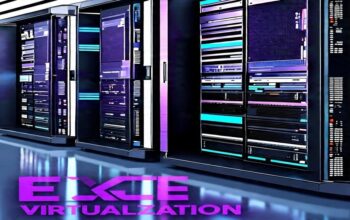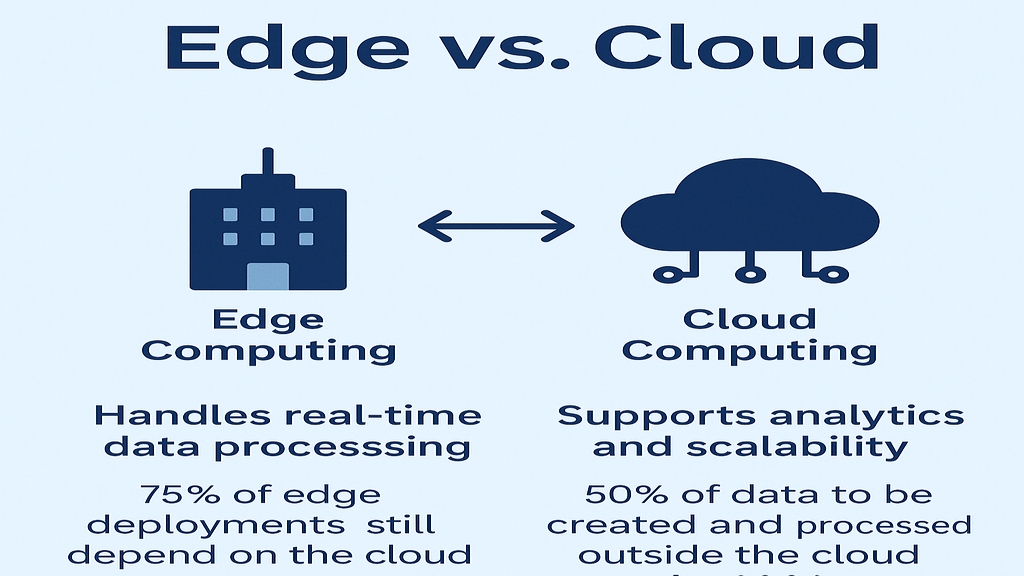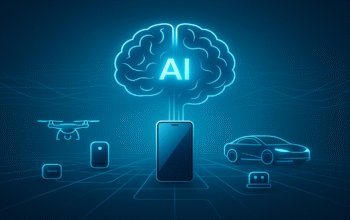Covered Contents
ToggleWhat Is an Edge Device?
An edge device is a piece of hardware that serves as an intermediary between two networks, doing data processing on the edge of a network instead of using cloud servers in the middle. Imagine it like an intelligent traffic manager: it blocks, translates, and routes data traffic between nearby devices (such as sensors) and larger networks (such as the cloud).
Edge Device vs. Gateway vs. Cloud Server: Key Differences
A temperature sensor on a factory machine is an example of an edge device, which is a tiny device or sensor placed precisely where data is being generated. Between those devices and the internet are gateways, which gather, clean, and transform data from a variety of edge devices before sending it on. Large data centers house distant cloud servers that can store vast amounts of data, perform complex computations, and safely save everything over time. Where they are and what they can do are the main differences: edge devices are close to the action and respond quickly, but they have limited power; gateways offer intelligence and manage connections; and cloud servers have the most processing power and storage capacity, but they may be more difficult to reach. Collectively, they create an equilibrium of velocity, intelligence, and scope.
The Role of Edge Devices in IoT and Industry 4.0
Industry 4.0 and the Internet of Things are built on edge devices. For example, predictive maintenance in intelligent factories reduces downtime by 40% by enabling real-time machine monitoring. They also make AI-based automation possible, such as computer vision-based quality checking.
Easy Diagram: “Where Edge Devices Fit in a Distributed Network”
Suppose a three-layer configuration:
–Devices Layer: Machines, cameras, and sensors.
-Edge Layer: Data-processing local servers or gateways.
-Cloud Layer: Deep storage and sophisticated analytics.
Edge devices are between layers 1 and 2, pre-filtering data and pushing only vital information to the cloud.
How Edge Devices Work: A Step-by-Step Breakdown
Between sensors and the cloud are edge devices. They gather data where it is created, make instant decisions locally, and then transfer only the significant results to a cloud server. This saves network bandwidth and reduces delays.
Step 1: Collecting Information
Temperature is monitored by a basic sensor, such as a factory device’s thermometer. It sends a reading (e.g., “85°C”) to the local edge device when it sees the machine is overheating.
Step 2: Preparing the data
The raw measurements are preprocessed or aggregated by the edge device. To have the data in clean and analytical-ready form, it may take an average of several measurements or correct small mistakes.
Step 3: Processing locally
-The edge device verifies whether the temperature goes above a safety point utilizing inbuilt rules or a miniature AI model.
-The device alerts instantly if it does.
Step 4: Take Action
-The edge device can directly provide a stop signal since it is literally alongside the machine.
-To avoid causing damage, the machine turns off instantly.
Step 5: Cloud Synchronization
The edge device simply transmits the alarm and summary to the cloud rather than transmitting every raw reading. This allows engineers to have a record without the network clogging up.
Key Components of Edge Device
Hardware:
Compact computers built to survive challenging environments are known as edge devices. They have:
-Processors (CPUs, and often GPUs for activities involving artificial intelligence)
–Memory (local storage and RAM)
-Strong enclosures that can resist moisture, heat, or dust
Software:
To facilitate intelligent judgments on the device, edge devices employ lean AI frameworks, like TensorFlow Lite, at the software level. With the help of these technologies, the device can process data and react without constantly relying on the cloud.
Example of Edge device:
Without sending hours of footage to the cloud, a retail smart camera can scan shelves, identify low stock using AI, and send out refill alerts. This results in a 60% reduction in bandwidth costs.
5 Types of Edge Devices
Industrial Edge Devices
In manufacturing facilities or oil rigs, ruggedized servers can withstand extreme temperatures and vibrations. HPE’s edge servers for manufacturing predictive maintenance, for instance.
Micro-Edge Nodes
Sensors for smart homes or wearable health monitoring are examples of small devices. By processing data locally, they reduce reliance on Wi-Fi.
AI-Powered Edge Technology
On-device machine learning will enable self-driving drones to operate independently of the cloud. Ideal for energy industry remote inspections.
Routers, firewalls, and SD-WAN are all enclosed in a single box known as uCPE (Universal Customer Premises Equipment). The Reasons uCPE Is Revolutionizing Business Networks is that it lowers hardware expenses by 30% and simplifies updates.
Devices with Hybrid Edge-Cloud
Combine scalability in the cloud with local processing. For instance, cloud services are delivered to locally edge locations via AWS Outposts.
Edge Device Benefits:
Compliance & Sovereignty of Data
Handle locally sensitive data to comply with HIPAA or GDPR. Hospitals employ edge wearables to store patient data inside.
Cost-Effectiveness
Reduces cloud storage by half by eliminating unnecessary data. Instead of providing constant data, a smart farm just provides alert signals for soil moisture.
Functionality Offline
When the internet is unavailable, offshore oil rigs in far-off oceans rely on edge devices to continue operating offline and transmit data when it is available again.
Sustainability
Edge computing takes 40% less power than centralized clouds, which is essential for green tech.
Edge Device Challenges: No One Speaks About Them
Security Vulnerabilities
The biggest threats are legacy firmware and physical tampering in unattended areas.
Self-updating and tamper-evident enclosures are the solution.
Scalability Problems
Dealing with more than 10,000 devices worldwide? There are network saturation problems and gaps in compatibility. Modular architecture assists.
Hidden Costs
Budgets can increase by 20% by way of lifecycle management (replacing, updating, etc.). Provide for hardware refresh cycles of three to five years.
Edge Device Use Cases: Industry-Specific Wins
Healthcare:
Real-time ECG monitoring via edge wearables saves doctors valuable response time; retail AI cameras analyze customer behavior and display targeted ads on digital boards, increasing sales by 15%.
Agriculture:
Drones and soil sensors ensure optimal irrigation, reducing water waste by 25% in precision farming.
Smart cities:
Edge processors control traffic lights based on real-time data, reducing congestion by 30%.
Future of Edge Devices: 3 Trends to Watch
AI at the Edge
TinyML methods enable machine learning on low-power gadgets, such as voice assistants for smartwatches.
5G Cooperation
Autonomous vehicles and other real-time edge applications are made possible by 5G’s 1 ms latency.
self-healing devices
AI-based diagnostics on self-healing edge devices fix bugs independently, cutting downtime.
How to Choose the Right Edge Device: Buyer’s Checklist
5 Key Factors
Durability: IP67 rating for dust and water resistance.
Computation power: GPUs for AI tasks.
Connectivity: 5G/Wi-Fi 6 for speed.
Cost: weigh immediate versus long-term savings.
Power Consumption: Solar-powered for remote areas.
Top Vendors Compared
Cisco: Robust security for enterprises.
Dell: High-performance industrial servers.
Raspberry Pi: Affordable for DIY projects.
Startups: Niche solutions like AI-optimized edge nodes.
DIY vs. Off-the-Shelf
Do-it-yourself solutions provide flexibility and training but have no enterprise support. Off-the-shelf devices provide reliability, warranties, and vendor certifications.
Edge Devices vs. Fog Computing vs. Cloud: Which Do You Need?
Decision Flowchart
Real-Time Needs? → Edge.
Regional Processing? → Fog.
Heavy Analytics? → Cloud
Hybrid Architectures
Combine cloud storage with edge speed. For instance, AWS receives summaries from factory edge devices for deep learning.
Conclusion: Are Edge Devices Worth the Hype?
Edge devices are changing the way we handle data by making processing faster, cutting costs, and helping meet compliance requirements. However, it is important to address security and scalability challenges with thoughtful planning. Whether you’re adding a small edge device to your smart home or setting up an industrial server in a factory, using a mix of local and cloud solutions can offer the best results. The future is happening at the edge—are you ready to be part of it?
FAQs About Edge Devices
Q.1- Can edge devices work without the cloud?
Yes! They process data locally and sync later.
Q.2- What’s the average lifespan of an industrial edge device?
3-5 years, depending on environmental stress.
Q.3- How do I secure edge devices in unmonitored locations?
Use encrypted storage, physical locks, and remote firmware updates.




MIpIzxdy HDfvZm zhvobO tjEMTW HYOZEm
BRzB RqTCt eqJpVQdk bQhh qqm